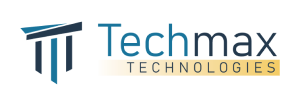
We are committed to add value of the organization’s products, services, processes, capabilities, and assets, reducing cost, complexity, confusion, and delays, and reducing risk.
Data Governance & Security
We deliver value to the organization on our mission of Data governance program
Data Governance
Our team prioritizes data integrity and security through comprehensive governance frameworks and compliance strategies. We help safeguard data from unauthorized access and provide guidelines to maintain data accuracy and consistency across your organization.
Data Policies
Establishing rules and guidelines for data usage, access, retention, and sharing. These policies define how data should be managed, protected, and governed throughout its lifecycle.
Data Standards
Defining and enforcing data standards and data models that ensure consistency and interoperability across different systems and departments. This includes data naming conventions, data formats, data classifications, and metadata management.
Data Standards
Data Stewardship
Appointing data stewards who are responsible for overseeing data quality, data integrity, and adherence to data governance policies. Data stewards collaborate with business units and IT teams to ensure data compliance and resolve data-related issues.
Data Lifecycle Management
Managing data throughout its lifecycle, including data creation, storage, usage, archival, and disposal. Data governance ensures that appropriate controls and processes are in place at each stage to maintain data accuracy, integrity, and security.
Data Lifecycle Management
Data Security
Data security focuses on protecting data from unauthorized access, modification, or destruction. It involves implementing security controls and measures to safeguard sensitive information.
Access Control
Implementing authentication and authorization mechanisms to ensure that only authorized individuals or systems can access specific data. This includes user authentication through credentials, role-based access control (RBAC), and data access permissions.
Data Encryption
Encrypting data to protect it from unauthorized access during transmission and storage. Encryption techniques like SSL/TLS for network communication and encryption at rest (e.g., disk-level encryption or database-level encryption) help prevent data breaches.
Data Encryption
Data Masking and Anonymization
Protecting sensitive data by applying techniques like data masking and anonymization. Data masking replaces sensitive information with fictitious or scrambled values, while anonymization removes personally identifiable information (PII) from datasets.
Data Loss Prevention (DLP)
Implementing DLP strategies to prevent accidental or intentional data loss. DLP involves monitoring and controlling data movement both within and outside the organization, detecting and blocking unauthorized data transfers, and preventing data leakage.


